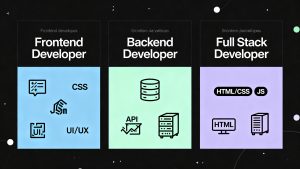The industry’s definition of “FullStack” development has become obsolete. As technology expands, the demands placed on software professionals have shifted beyond the simple intersection of front-end and back-end skills. Today, successful engineers must adapt to a MultiStack reality, one shaped by an array of rapidly evolving domains, from AI to infrastructure management.
The Limitations of the FullStack Label
For years, “FullStack” simply referred to developers who could build both user interfaces and server-side logic. In 2025, however, this label has lost meaning. Modern applications integrate AI, mobile, cloud, and specialized systems—each requiring unique knowledge, dedicated best practices, and selective depth. The traditional full-stack definition cannot encompass the complexity created by advanced integrations such as large language model (LLM) architecture, prompt injection defenses, multi-agent orchestration, and next-generation infrastructure.
What Does MultiStack Really Mean?
A MultiStack developer is not someone who claims mastery of every technology, but rather an engineer who can work effectively across varied and rapidly changing stacks. These stacks may include web, mobile, embedded systems, infrastructure as code, and AI-powered tools. Instead of aiming for depth in every layer, MultiStack professionals balance broad knowledge with targeted expertise—knowing when to dive deep and when to rely on a high-level toolkit. Their strength lies in the ability to shepherd a product from concept to live deployment, troubleshoot across domains, and make pragmatic choices based on real-world demands.
The AI Revolution and the Expanding Stack
The rise of AI has profoundly complicated the technology landscape. What gets labeled a “modern stack” in 2025 often includes up to nine distinct layers, each with multiple competing choices and new AI-related responsibilities. Junior developers today face learning curves that cover everything from embedding pipelines and multi-agent frameworks to productionizing LLMs. The idea of “doing it all” is outdated; the goal now is targeted competency and the wisdom to build reliable, scalable solutions with the right set of tools.
Real Lessons Come from Production
The most valuable experience comes not from tutorials or demo projects, but from building, owning, and maintaining systems that serve real users. True engineering intuition develops through on-call failures, misconfigurations, infrastructure breakdowns, and post-mortem investigations. These lessons often teach engineers what habits and tradeoffs genuinely matter—habits that are crucial in a world where production code is more complex and interconnected than ever.
Rethinking Engineer Training and Expectations
There is a growing dissonance in expectations for new developers. Rather than preparing juniors with surface-level exposure to every domain, companies should focus on mentorship, guided learning, and placing responsibility gradually. Mastery in MultiStack engineering is earned through iteratively building, operating, and refining real products—not from quick bootcamps or broad video tutorials alone.
MultiStack as the Future of Product Ownership
MultiStack development signifies product ownership across diverse and interconnected technology domains. It is not about accumulating every possible skill, but about building systems that work, learning from mistakes, and understanding how every tech decision impacts both users and business outcomes. In a world defined by rapid innovation, the most valuable engineers are those who can connect stacks, solve systemic problems, and provide leadership when it counts.
Read more such articles from our Newsletter here.



